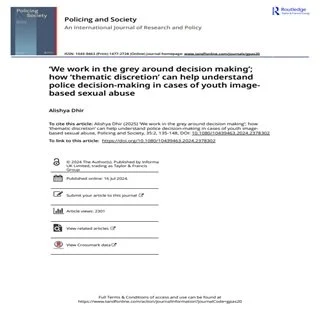By Florence Yosne. National Criminal Justice Educational Development Project Portland State University And Center Of Criminal Justice Arizona State University.
From the Introduction: This bibliography is the result of a cooperative effort between Portland State University and Arizona State University. It was developed in response to a need for a comprehensive and detailed multi-disciplinary compilation of available books and government documents that relate to the emerging field of Criminal Justice. Professional journals and magazine sources were not included due to person power constraints and the recognition that many of the more significant articles and statements relating to Criminal Justice can be found contained in recently-published books.
The bibliography is broken down into four general substantive areas: (1) criminal justice; (2) law enforcement; (3) corrections; and (4) courts. The majority of the works are included under the heading "Criminal Justice." In this area, titles are included from such diverse fields as anthropology, economics, education, history, law, political science, psychology, the physical sciences, public administration, and sociology. The other three areas--"Law, Enforcement, " "Corrections, " and "Courts"--while more specific in nature, also reflect the use of information and research from many related and diverse sources.
Clearly, the specific subjects appearing within these four broad rubrics are varied and numerous. In order to facilitate the use of this bibliography, the four broad areas were further broken down into specific subjects such as "civil liberties, " "victimless crimes, " etc., with bibliography entries relating to those topics being identified. The detailed classification of bibliography entries appears at the end of this "Introduction."
It will be readily apparent to the user that the bibliography is multi-disciplinary in nature. This reflects the editor's view that Criminal Justice is a multi-disciplinary, problem-oriented field of scholarship, research, and teaching, embracing those aspects of the social, behavioral, natural, and medical sciences relating to understanding crime and social deviance and entailing a critical examination of the system which has evolved for the handling of attendant problems. The selection of authors, titles, and subjects reflects the need of Criminal Justice, as an emerging field of study, to be sensitive to the ideas and philosophies of a wide range of scholar sand researchers. A bibliography with a narrow focus is of organization and functioning of an entire society.
The sources for the bibliography were legion, and they also reflect the multi-disciplinary approach. Bibliographies from the faculty at Portland State University, Florida Slate University, Michigan State University, San Jose State University, and the University of California at Berkeley, in addition to the Index of Books in Print, catalogs from the National Criminal Justice Reference Service, lists from publishers, and reviews from the New York Review of Books, Psychology Today, and the Atlantic Monthly, provided the editor with the reference material necessary for so vast an undertaking.
MEMBERS NATIONAL CRIMINAL JUSTICE EDUCATIONAL CONSORTIUM. 1975. 418p.











